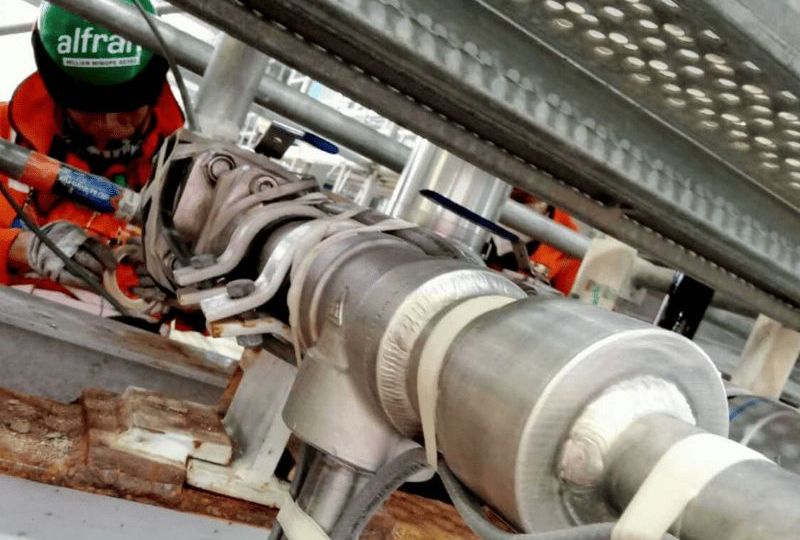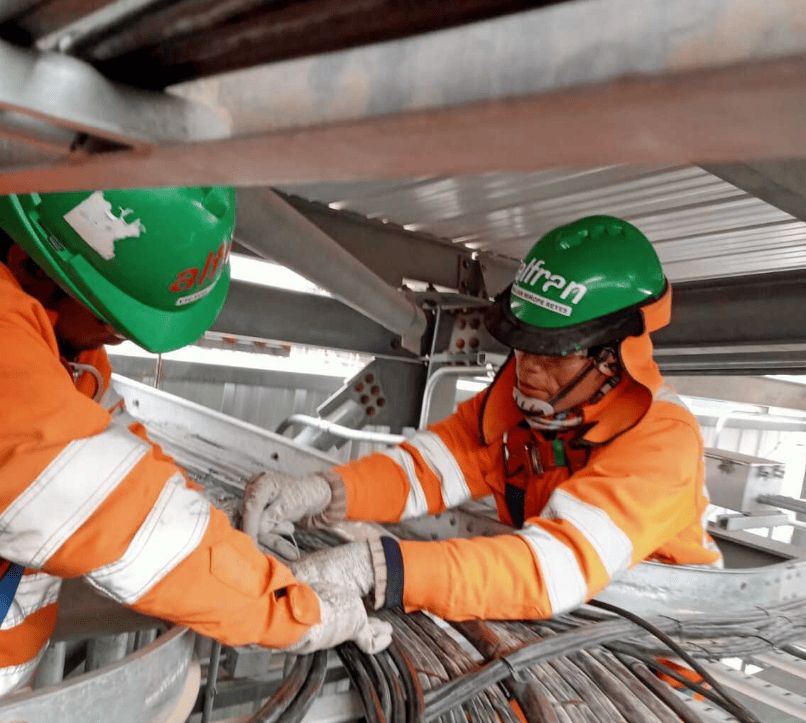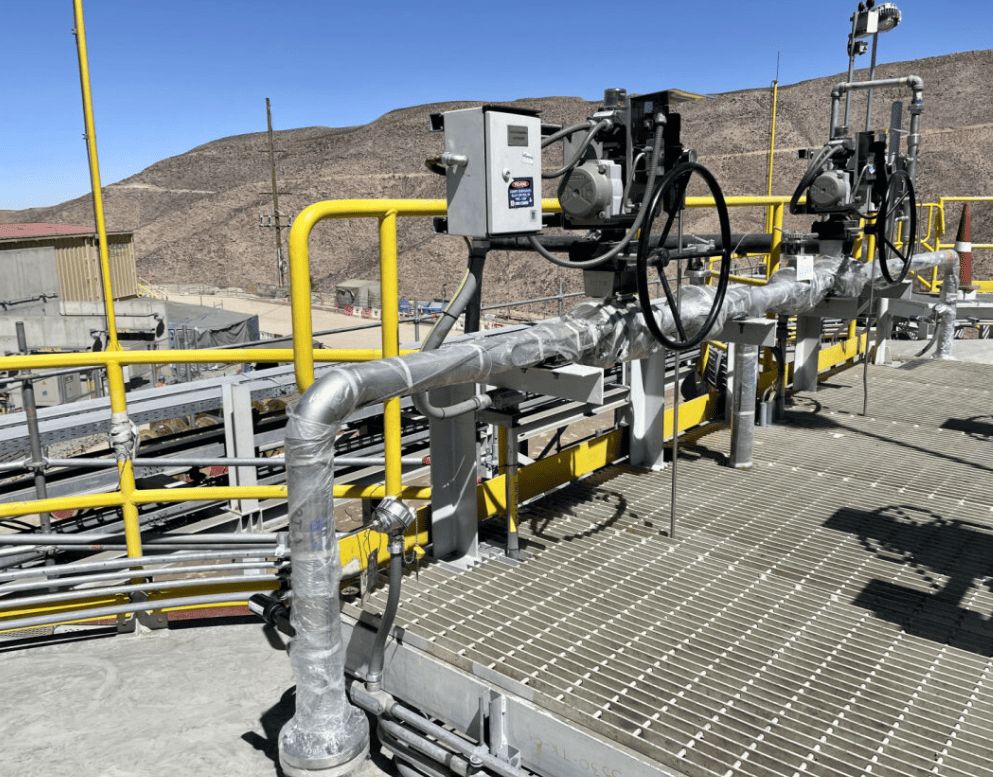
Electrical heat tracing systems ensure that each pipe section maintains the appropriate temperature to prevent freezing, even in sub-zero environments.
In What Industrial Situations Should It Be Used?
These are some of the most common scenarios:
- Processes that require maintaining specific chemical properties (viscosity, density, etc.).
- Transport of hydrocarbons, resins, oils, or reactive fluids.
- Treated water networks in outdoor areas, especially in plants with pipes exposed to freezing conditions.
How We Design an Efficient Electrical Heat Tracing System
A correct design balances energy consumption, safety, and ease of maintenance.
Selection of Heating Cable
- Self-regulating (SR) cables: adjust their power output according to ambient temperature and supply voltage; safe even when overlapped or crossed.
- Constant wattage cables: provide stable heat but require external control and must not be overlapped.
- Mineral insulated (MI) cables: suitable for aggressive environments and extreme temperatures.
Power and Circuit Sizing
- Typical values range from 10 W/m to 40 W/m depending on ΔT, pipe diameter, and thermal insulation. In special cases, it can exceed this.
- In a standard 240 V, 20 A circuit, up to 240 m of 20 W/m cable can be used (≈ 4,800 W), but it is recommended to limit it to around 200 m to include safety margins and accessibility.
- It is advisable to divide the tracing system into sections of 60 to 80 m with individual power supply to simplify control, reduce risks, and facilitate future repairs.
Control and Monitoring
- Temperature sensors or electronic thermostats connected to automatic controllers are installed.
- Preventive alarms are required to detect leaks, open circuits, or short circuits, with alerts communicated via the control panel.
Complementary Thermal Insulation
- Insulation can reduce energy consumption by up to 80%, stabilize temperatures, and shorten recovery time.
- In corrosive or humid environments, insulation must be compatible and properly sealed.
![Alfran technicians installing electrical tracing cable system]()
Operational and Energy Efficiency Benefits of the Heat Tracing System
- Prevents blockages and ruptures caused by freezing, ensuring production continuity.
- Reduces emergency interventions and unexpected shutdowns.
- Achieves significant energy savings by combining the right cable, smart control, and good thermal insulation.
- Increases operational safety, as self-regulating cables prevent overheating even without insulation.
- Provides flexibility for expansions or network modifications thanks to cables that can be cut or adjusted on-site.
How to Maintain an Electrical Heat Tracing System Without Interrupting Production
- Regular visual inspections to detect damage or insulation wear.
- Electrical tests using a multimeter before each startup or scheduled shutdown.
In short, an industrial electrical heat tracing system allows for fluid transport without thermal risks, with high energy efficiency and regulatory safety. From design and cable selection to in-operation performance, each stage must respond to the temperature and continuity requirements of each client.




